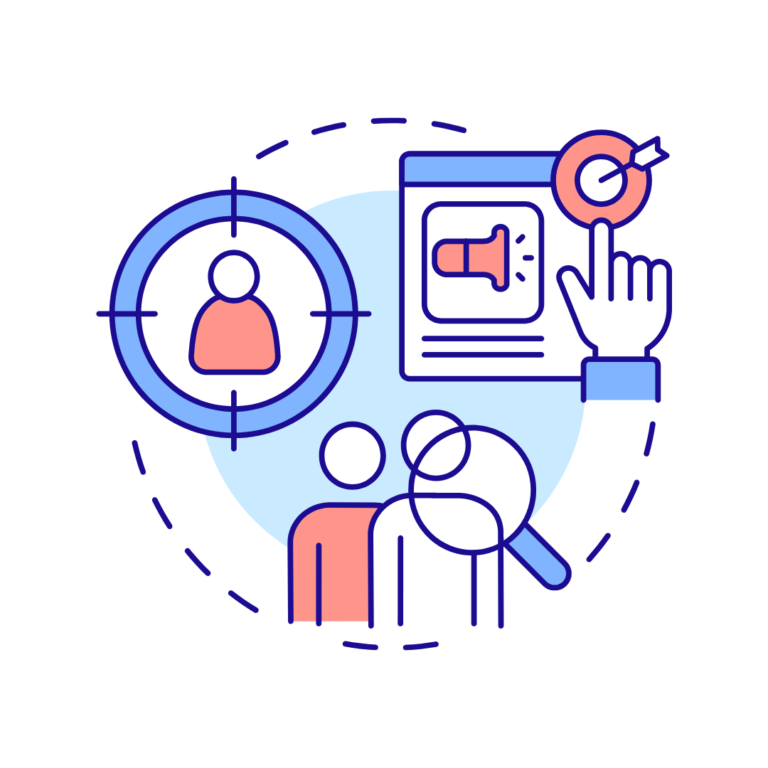In the competitive world of E-commerce, understanding your target audience is crucial for driving sales and building long-lasting customer relationships. Knowing who your customers are, what they want, and how to effectively communicate with them can make the difference between a successful online store and one that struggles to grow. Today we will guide you through the process of identifying your target audience, segmenting them effectively, and engaging them with personalized marketing strategies.
The first step in reaching your ideal customers is to clearly define who they are. Start by gathering data on your current customer base through your website analytics, sales data, and customer feedback. Look for patterns and common characteristics such as age, gender, location, interests, and purchasing behavior. Tools like Google Analytics, Facebook Insights, and customer surveys can provide valuable insights into who is visiting your site and making purchases.
Creating detailed buyer personas can help you visualize and understand your target audience better. A buyer persona is a semi-fictional representation of your ideal customer based on market research and real data about your existing customers. Include information such as demographics, motivations, challenges, and buying habits. By having a clear picture of your target audience, you can tailor your marketing efforts to meet their specific needs and preferences.

To truly understand your target audience and refine your marketing strategies, leveraging data analytics is essential. Advanced analytics tools provide a wealth of information about customer behavior, preferences, and trends, enabling you to make data-driven decisions.
Customer behavior analysis is a fundamental aspect. By tracking and analyzing how customers interact with your website, you can gain insights into which aspects are performing well and which areas need improvement. Metrics such as page views, time spent on pages, click-through rates, and conversion rates offer valuable information about user engagement.
Sales data analysis can also provide critical insights. Examining your sales data helps identify top-selling products, peak purchasing times, and average order values. This information is crucial for optimizing inventory, tailoring marketing campaigns to promote best-sellers, and planning for high-demand periods.
Customer journey mapping is another powerful tool. Creating detailed maps of your customers’ journeys from first contact to purchase can reveal pain points in the buying process and highlight opportunities for enhancing the customer experience.
A/B testing allows you to experiment with different marketing strategies and website designs. By comparing the performance of different versions, you can determine which approaches resonate best with your audience, leading to higher engagement and conversions.
Predictive analytics can help forecast future trends and customer behaviors, allowing you to anticipate market changes, plan marketing campaigns more effectively, and make informed decisions that drive growth.
By utilizing data analytics, you can gain deeper insights into your target audience, refine your strategies, and create more effective marketing campaigns that resonate with your customers.
Once you have identified your target audience, the next step is to segment them into smaller, more specific groups. Audience segmentation allows you to create highly targeted marketing campaigns that resonate with each group. There are several ways to segment your audience:
The e-commerce landscape is dynamic, and customer preferences can change rapidly. Staying attuned to these changes and adapting your strategies accordingly is crucial for maintaining relevance and competitiveness.
Regularly gathering feedback from your customers is essential. Continuously collect feedback through surveys, reviews, and direct interactions to stay informed about their needs, preferences, and pain points. This ongoing dialogue helps you make informed adjustments to your products and services.
Monitoring industry trends is another important practice. Keeping an eye on trends and innovations within the e-commerce industry helps you anticipate shifts in customer behavior and stay ahead of the competition. This broader market context is vital for strategic planning.
Updating your product offerings regularly to reflect changing customer preferences is crucial. Introduce new products, discontinue underperforming ones, and adjust your inventory based on demand. This ensures that your product catalog remains fresh and relevant.
Enhancing the customer experience should always be a priority. Focus on optimizing your website for mobile devices, simplifying the checkout process, and providing excellent customer support. A seamless and enjoyable shopping experience keeps customers coming back.
Leveraging social media to engage with your audience in real time is also beneficial. Social media can be a powerful tool for gauging customer sentiment, promoting new products, and responding quickly to any concerns or issues.
Personalizing your marketing efforts is increasingly important as customer expectations for personalized experiences grow. Tailor your marketing campaigns to individual customer segments using data-driven insights. Personalized campaigns address specific needs and preferences, leading to higher engagement and satisfaction.
By staying flexible and responsive to changing customer needs, you can ensure that your e-commerce business remains relevant and continues to thrive in a constantly evolving market. Adaptability is key to maintaining customer satisfaction and driving long-term success.
With a clear understanding of your target audience and effective segmentation in place, you can now focus on engaging them with personalized marketing strategies. Here are some tips to help you connect with your audience:
Understanding and engaging your target audience is essential for the success of your e-commerce business. By identifying who your customers are, segmenting them effectively, and using personalized marketing strategies, you can build strong relationships, increase customer satisfaction, and drive sales. Take the time to know your audience, and you’ll be well on your way to achieving long-term success in the competitive e-commerce landscape.